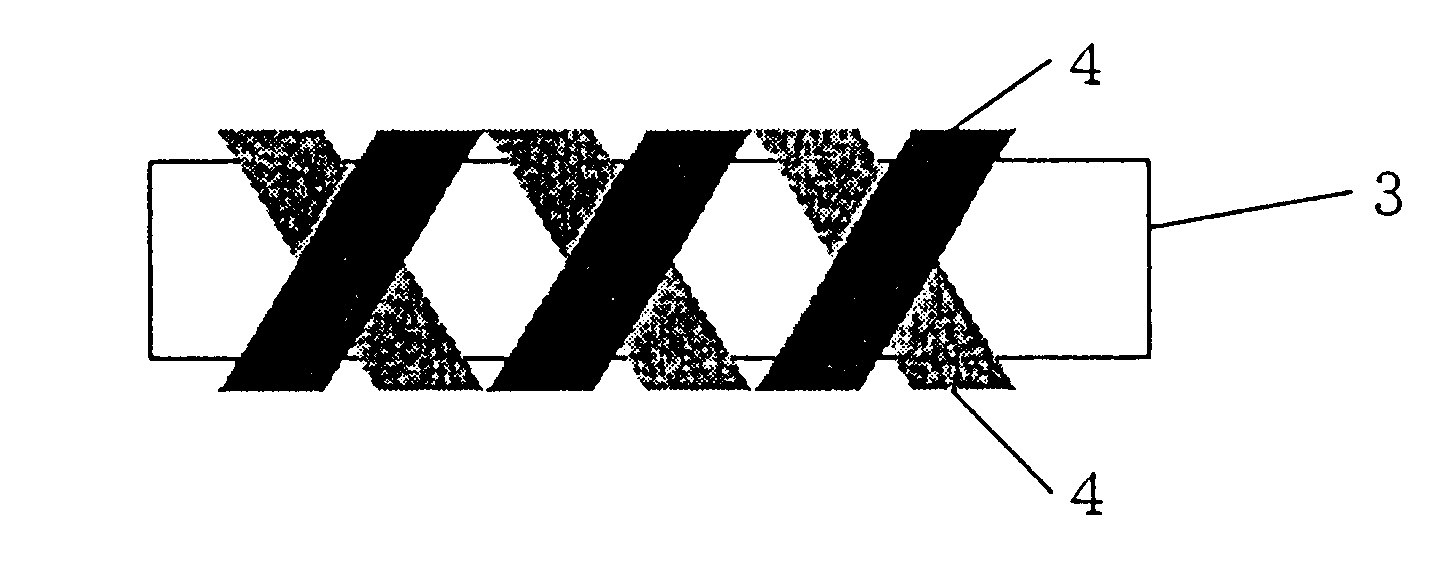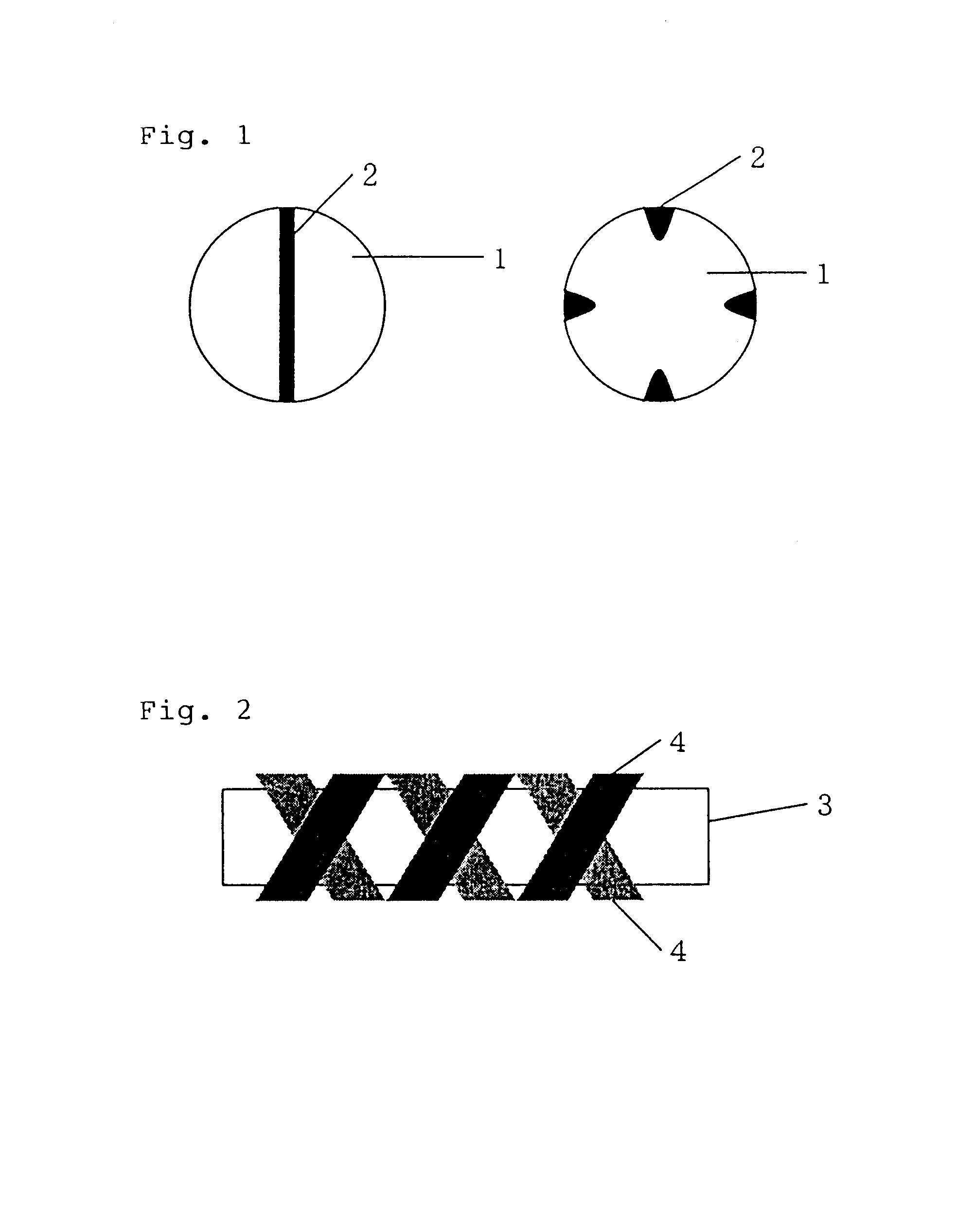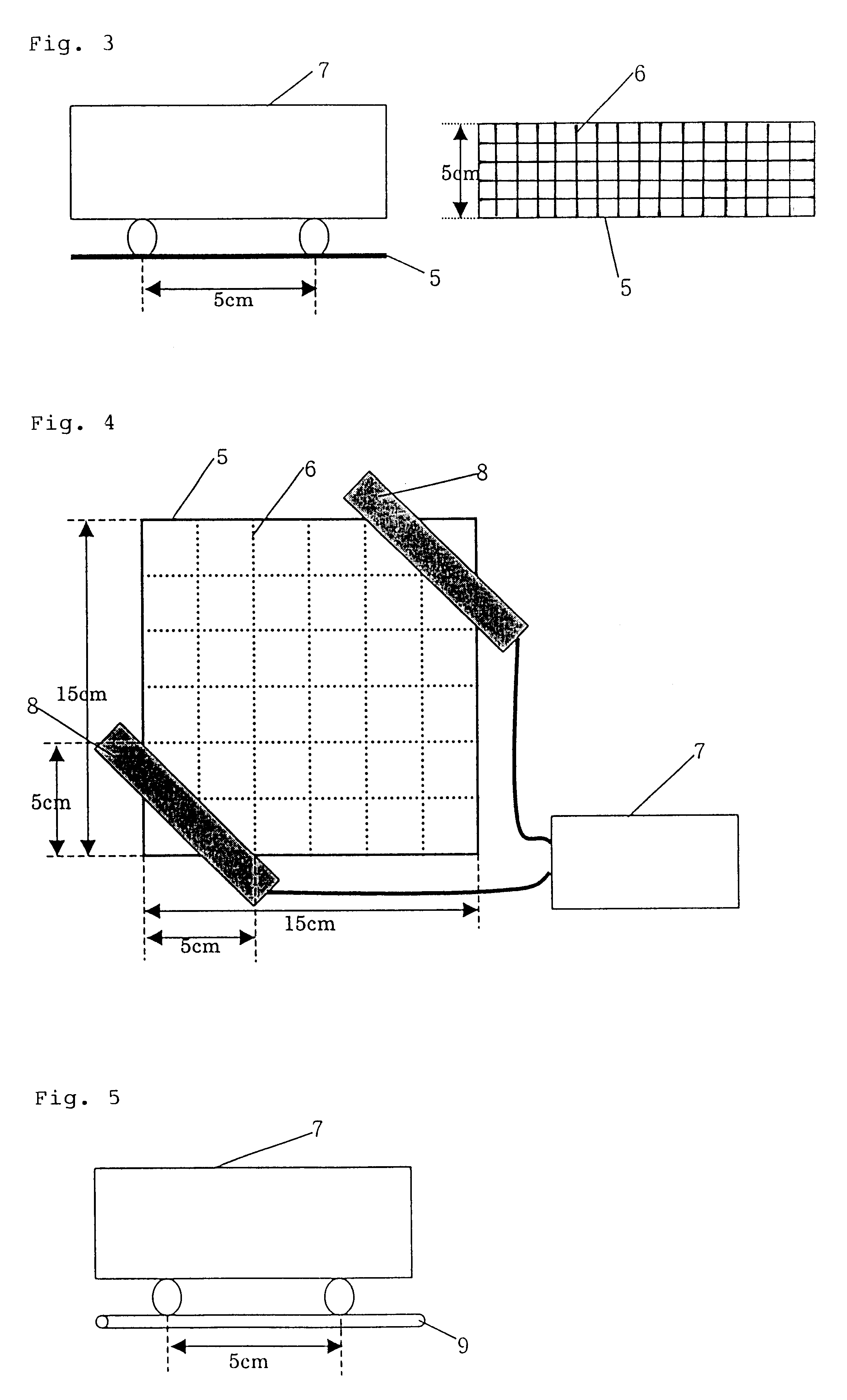Fabrics and rust proof clothes excellent in conductivity and antistatic property
a technology of conductivity and anti-static property, which is applied in the direction of yarn, weaving, transportation and packaging, etc., can solve the problems of difficult to achieve electrical conductance throughout dust proof clothes, etc., to achieve excellent durability and anti-static properties, stable electrical conductance, and easy earth
- Summary
- Abstract
- Description
- Claims
- Application Information
AI Technical Summary
Benefits of technology
Problems solved by technology
Method used
Image
Examples
example 1
Polyester filament yarn 75d-36f was used as the warp and polyester false twisted yarn 100d-48f was used as the weft to form a textile as the base. As conductive yarn in the warp, polyester filament yarn 30d-12f was covered by S-twist with Beltron B31 (Kanebo, Ltd.) 20d-6f at 600 T / m and further covered thereon by Z-twist with Beltron B31 (Kanebo, Ltd.) 20d-6f at 480 T / m whereby conductive yarn constructed by double-covering wherein the degree of coverage of the conductive fiber was 65% was prepared. The resulting yarns were inserted at the ratio of 1:30 into the yarns of the above textile. As conductive yarn in the weft, covered thread prepared by single-covering polyester filament yarn 50d-24f by S-twist with Beltron B31 (Kanebo, Ltd.) 20d-6f at 600 T / m wherein the degree of coverage of the conductive fiber was 30%, was also inserted at the ratio of 1:20 into the yarns of the above textile, whereby plain weave fabric having a warp density of 160 yarns / inch. and a weft density of 10...
example 2
Polyester filament yarn 75d-36f was used as the warp and polyester false twisted yarn 100d-48f was used as the weft to form a textile as the base. As conductive yarn in the warp, polyester filament yarn 30d-12f was covered by S-twist with Beltron B31 (Kanebo, Ltd.) 20d-6f at 600 T / m and further covered thereon by Z-twist with Beltron B31 (Kanebo, Ltd.) 20d-6f at 480 T / m whereby conductive yarn constructed by double-covering wherein the degree of coverage of the conductive fiber was 65% was prepared. The resulting yarns were inserted at the ratio of 1:30 into the yarns of the above textile. As conductive yarn in the weft, single-covered thread prepared by covering polyester filament yarn 75d-36f by S-twist with Beltron B31 (Kanebo, Ltd.) 20d-6f at 600 T / m wherein the degree of coverage of the conductive fiber was 28%, was also inserted at the ratio of 1:20 into the yarns of the above textile, whereby 2 / 3 twill fabric having a warp density of 160 yarns / inch and a weft density of 110 y...
example 3
Polyester filament yarn 75d-36f was used as the warp and polyester false twisted yarn 100d-48f was used as the weft to form the base portion of textile. As conductive yarn in the warp, polyester filament yarn 30d-12f was covered by S-twist with Beltron B31 (Kanebo, Ltd.) 20d-6f at 600 T / m and further covered thereon by Z-twist with Beltron B31 (Kanebo, Ltd.) 20d-6f at 480 T / m whereby electrically conductive yarn constructed by double-covering wherein the degree of coverage of the conductive fiber was 65% was prepared. The resulting yarns were inserted at the ratio of 1:30 into the yarns of the above textile. As electrically conductive yarn in the weft, covered thread prepared by twisting finished yarn 75d-36f having polyester temporarily sewn therein and Beltron B31 (Kanebo, Ltd.) 20d-6f together by S-twist at 600 T / m wherein the degree of coverage of the conductive fiber was 26%, was also inserted at the ratio of 1:20 into the yarns of the above textile, whereby plain weave fabric ...
PUM
| Property | Measurement | Unit |
|---|---|---|
| resistance | aaaaa | aaaaa |
| resistance | aaaaa | aaaaa |
| length | aaaaa | aaaaa |
Abstract
Description
Claims
Application Information
 Login to View More
Login to View More - R&D
- Intellectual Property
- Life Sciences
- Materials
- Tech Scout
- Unparalleled Data Quality
- Higher Quality Content
- 60% Fewer Hallucinations
Browse by: Latest US Patents, China's latest patents, Technical Efficacy Thesaurus, Application Domain, Technology Topic, Popular Technical Reports.
© 2025 PatSnap. All rights reserved.Legal|Privacy policy|Modern Slavery Act Transparency Statement|Sitemap|About US| Contact US: help@patsnap.com



